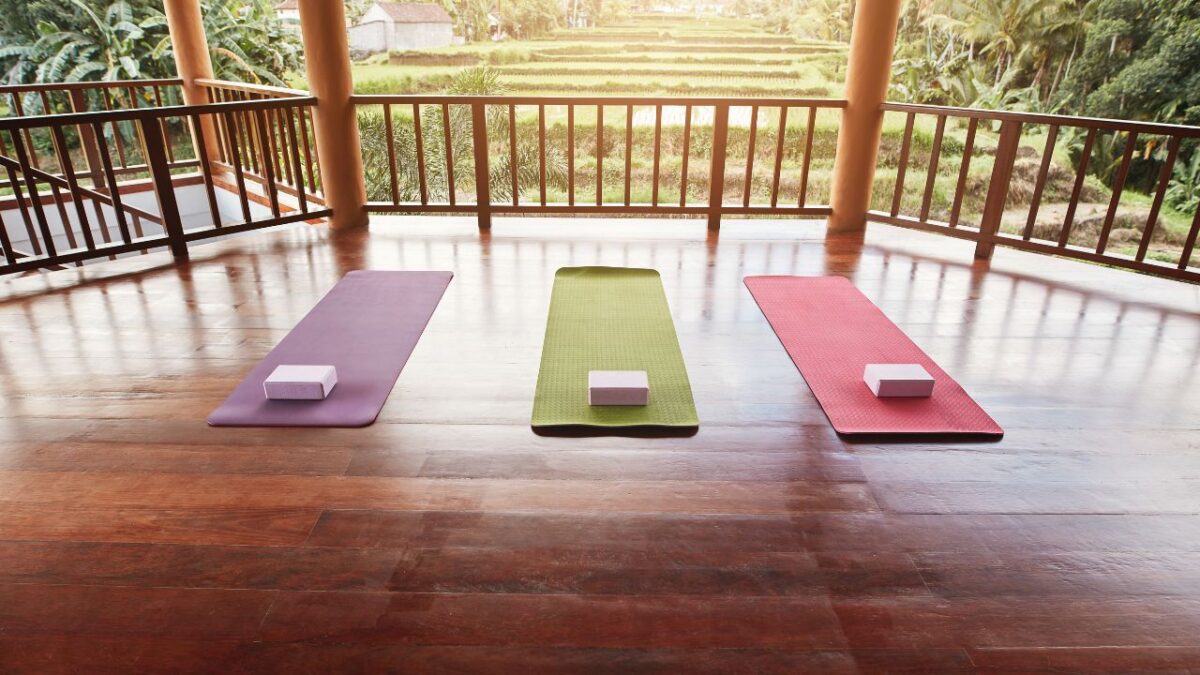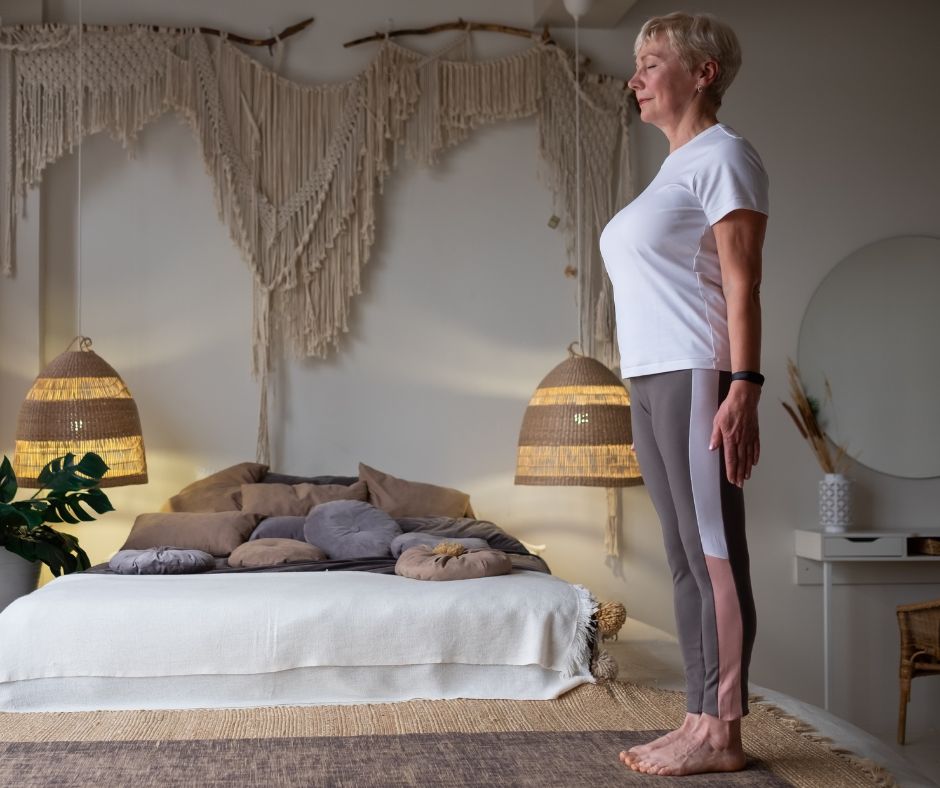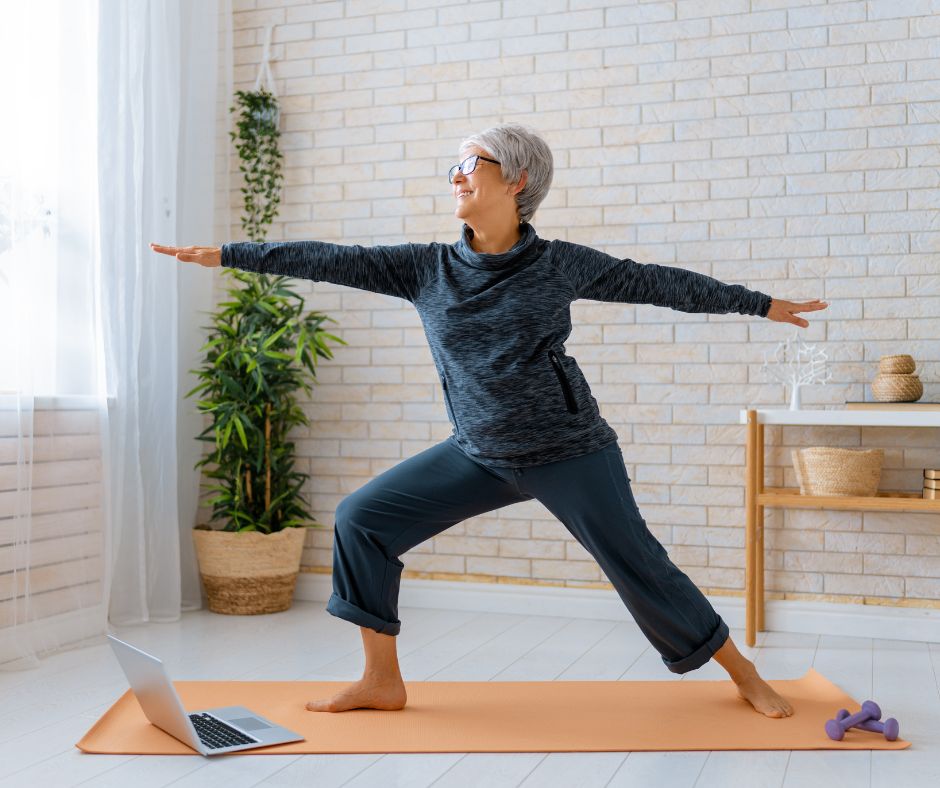Beginner-Friendly Yoga: Top 7 Poses for Seniors

Yoga is a powerful practice that offers numerous benefits for people of all ages. For beginners aged 50 and above, starting a yoga practice can be incredibly rewarding. It helps in maintaining physical health, enhancing mental clarity, and fostering a sense of peace and relaxation. This article will guide you through the top five yoga poses that are easy to perform, safe, and beneficial for beginners in this age group.
Benefits of Yoga for Older Adults
Engaging in yoga offers a multitude of benefits, especially for those in their golden years. It helps in:
- Improving Flexibility: Regular practice increases joint flexibility and muscle elasticity.
- Enhancing Balance and Stability: Yoga poses focus on balance, reducing the risk of falls.
- Building Strength: It strengthens muscles, which is crucial for maintaining mobility.
- Promoting Mental Well-being: Yoga reduces stress, anxiety, and depression.
- Supporting Cardiovascular Health: Certain poses improve circulation and heart health.
Now, let’s delve into the top eight yoga poses ideal for beginners aged 50 and above.
Mountain Pose (Tadasana)
Mountain Pose, or Tadasana, is a foundational yoga pose that promotes proper posture and balance. It is simple yet effective in aligning the body and calming the mind.

How to Perform Mountain Pose
- Stand with your feet together, ensuring your weight is evenly distributed.
- Engage your thigh muscles and lift your kneecaps without hardening your lower belly.
- Lengthen your spine, lifting through the crown of your head.
- Keep your arms relaxed at your sides with palms facing forward.
- Hold the pose for several breaths, focusing on your alignment and breathing deeply.
Benefits of Mountain Pose
- Improves Posture: Encourages proper alignment of the spine.
- Enhances Stability: Strengthens the legs and improves balance.
- Calms the Mind: Promotes a sense of grounding and mental clarity.
Mountain Pose is an excellent starting point for any yoga practice, especially for beginners looking to establish a strong foundation.
Tree Pose (Vrksasana)
Tree Pose, or Vrksasana, is a balancing pose that enhances stability and concentration. It is particularly beneficial for improving balance, which is crucial for older adults.

How to Perform Tree Pose
- Start in Mountain Pose.
- Shift your weight onto your left foot and slowly lift your right foot off the ground.
- Place the sole of your right foot on your left inner thigh or calf (avoid placing it on your knee).
- Bring your palms together in front of your chest in a prayer position.
- Find a focal point to maintain your balance and hold the pose for several breaths.
- Repeat on the other side.
Benefits of Tree Pose
- Enhances Balance: Strengthens the legs and improves stability.
- Increases Focus: Requires concentration, enhancing mental clarity.
- Builds Strength: Tones the leg muscles and improves core strength.
Tree Pose is a gentle way to build confidence and improve balance, making it ideal for beginners.
Cat-Cow Pose (Marjaryasana-Bitilasana)
The Cat-Cow Pose is a dynamic combination of two poses that promote spinal flexibility and relieve tension. It’s excellent for warming up the spine and preparing for more challenging poses.

How to Perform Cat-Cow Pose
- Start on your hands and knees in a tabletop position.
- Inhale, arch your back, and lift your head and tailbone towards the ceiling (Cow Pose).
- Exhale, round your spine, and tuck your chin to your chest (Cat Pose).
- Continue to flow between these two poses with your breath for several cycles.
Benefits of Cat-Cow Pose
- Increases Flexibility: Enhances spinal mobility and flexibility.
- Relieves Tension: Stretches the back and neck, reducing tension and stiffness.
- Promotes Relaxation: The rhythmic movement calms the mind and soothes the nervous system.
Cat-Cow Pose is gentle and accessible, making it perfect for beginners seeking to improve spinal health.
Legs Up the Wall Pose (Viparita Karani)
Legs Up the Wall Pose, or Viparita Karani, is a restorative pose that promotes relaxation and rejuvenation. It is excellent for reducing swelling in the legs and improving circulation.

How to Perform Legs Up the Wall Pose
- Sit with one side of your body against a wall.
- Swing your legs up onto the wall as you lie down on your back.
- Adjust your position so your hips are close to the wall and your legs are straight up.
- Relax your arms by your sides with palms facing up.
- Close your eyes and breathe deeply, holding the pose for 5-15 minutes.
Benefits of Legs Up the Wall Pose
- Reduces Swelling: Alleviates swelling and fatigue in the legs.
- Improves Circulation: Enhances blood flow and relieves tension.
- Promotes Relaxation: Calms the mind and soothes the nervous system.
Legs Up the Wall Pose is incredibly restorative, offering a gentle way to relax and rejuvenate, making it ideal for older adults.
Side Warrior Pose (Virabhadrasana II)
Side Warrior Pose, or Virabhadrasana II, is a powerful pose that strengthens the legs and arms while improving focus and stamina. It is particularly beneficial for building strength and enhancing balance.

How to Perform Side Warrior Pose
- Stand with your feet wide apart, about 3-4 feet.
- Turn your right foot out 90 degrees and your left foot slightly in.
- Raise your arms parallel to the floor, palms facing down.
- Bend your right knee, ensuring it is directly over your ankle.
- Gaze over your right hand and hold the pose for several breaths.
- Straighten your right leg and repeat on the other side.
Benefits of Side Warrior Pose
- Strengthens Legs and Arms: Builds muscle strength in the lower and upper body.
- Improves Balance: Enhances stability and balance.
- Increases Stamina: Boosts endurance and focus.
Side Warrior Pose is a dynamic and empowering pose that adds variety to your practice, making it ideal for older adults looking to build strength and balance.
Sphinx Pose (Salamba Bhujangasana)

Sphinx Pose, or Salamba Bhujangasana, is a gentle backbend that strengthens the spine and stretches the chest and shoulders. It is particularly beneficial for relieving lower back pain and improving posture.
How to Perform Sphinx Pose
- Lie on your stomach with your legs extended straight back.
- Place your elbows under your shoulders and forearms on the ground, parallel to each other.
- Press into your forearms and lift your chest, keeping your shoulders relaxed.
- Hold the pose for several breaths, focusing on lengthening your spine.
Benefits of Sphinx Pose
- Strengthens the Spine: Enhances spinal strength and flexibility.
- Opens the Chest: Stretches the chest and shoulders, improving posture.
- Relieves Lower Back Pain: Provides gentle relief for lower back discomfort.
Sphinx Pose is a gentle backbend that is accessible and beneficial for beginners, promoting spinal health and overall well-being.
Corpse Pose (Savasana)
Corpse Pose, or Savasana, is a restorative pose that concludes a yoga practice. It allows the body and mind to fully relax and integrate the benefits of the practice.

How to Perform Corpse Pose
- Lie flat on your back with your legs extended and arms at your sides, palms facing up.
- Close your eyes and take slow, deep breaths.
- Allow your body to relax completely, releasing any tension.
- Stay in this pose for 5-15 minutes, focusing on your breath and letting go of all thoughts.
Benefits of Corpse Pose
- Deep Relaxation: Promotes complete relaxation of the body and mind.
- Reduces Stress: Helps to alleviate stress and anxiety.
- Enhances Meditation: Provides a meditative state, enhancing mental clarity.
Corpse Pose is essential for integrating the benefits of your yoga practice and achieving deep relaxation.
Takeaway
Yoga is a wonderful practice for beginners aged 50 and above. The poses discussed in this blog—Mountain Pose, Tree Pose, Cat-Cow Pose, Legs Up the Wall Pose, Side Warrior Pose, Sphinx Pose, and Corpse Pose—are specifically chosen to be safe, effective, and beneficial for this age group. Regular practice of these poses can lead to improved flexibility, balance, strength, and mental well-being. Remember to listen to your body, move at your own pace, and enjoy the journey of yoga.
FAQs
What are the benefits of yoga for older adults? Yoga offers numerous benefits for older adults, including improved flexibility, balance, strength, mental clarity, and relaxation. It also supports cardiovascular health and reduces stress.
Can beginners aged 50 and above do yoga? Yes, beginners aged 50 and above can safely practice yoga. It is important to start with gentle poses and listen to your body to avoid overexertion.
How often should older adults practice yoga? Older adults can practice yoga as often as they feel comfortable. Starting with 2-3 times a week and gradually increasing the frequency is a good approach.
What should I wear for yoga practice? Wear comfortable, breathable clothing that allows for a full range of motion. Yoga is typically practiced barefoot, but you can wear non-slip socks if preferred.
Do I need any special equipment for yoga? A yoga mat is essential for comfort and safety. Other helpful props include a yoga strap, blocks, and a bolster, but they are not necessary for beginners.
Can yoga help with chronic pain? Yes, yoga can help alleviate chronic pain by improving flexibility, reducing tension, and promoting relaxation. However, it is important to consult with a healthcare provider before starting a yoga practice if you have any chronic conditions.
